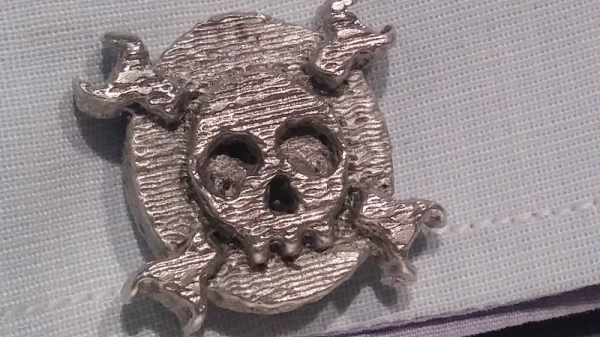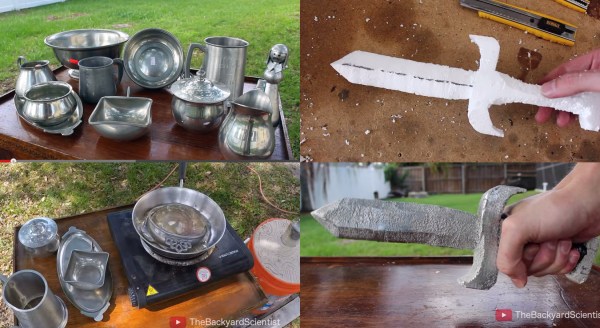Casting metal and 3D printing go together like nuts and gum, and there are no shortage techniques that use the two together. Lost PLA casting is common, and sculptors are getting turned on to creating their works in plastic first before sending it off to the foundry. Now the folks at FormLabs have turned the whole ‘casting metal and 3D printer’ thing on its head: they’re printing sacrificial molds to cast pewter.
There are two techniques demonstrated in this tutorial, but the real winner here is printing a complete sacrificial mold for pewter miniatures. While this technique requires a little bit of work including washing, curing, and a bit of post-processing, you would have to do that anyway with anything coming out of a resin printer.
The material of choice for these molds is a high temp resin with a heat deflection temperature of 289 °C. Using a pewter alloy that melts at 260 °C, casting a metal miniature is as simple as pouring molten metal into a mold. Demolding might be a little finicky, but with a small screwdriver used as a chisel, it’s possible to get the cast newly parts out.
We’ve seen pewter casting with PLA, but the quality available from the Form resin printers is truly amazing and produces some great looking miniatures.








![A][](http://hackaday.com/wp-content/uploads/2012/04/a.png)











